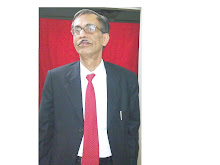When airplanes were not available on the planet, intercontinental travel was the quickest by sea from one port to another. On ships, one would spend two-three months to reach United Kingdom or the United States. Since then the ships have increased the speed and ferry goods over the same distance in a couple of weeks or less. Air travel reduced the time spent on travel but over the last few decades the times taken to travel by air has not declined but in some cases have increased substantially. The speed of aircrafts has indeed increased. But the numbers of passengers the latest aircrafts haul are much higher than it used to be decades back. But the overall travel time did not decline as a result. For, the airlines take more time to screen and load baggage of 4 to 5 times more passengers, the security screening takes more time. Passengers spend more time walking longer distances between boarding gate to the aircraft (sometimes involving a bus trip, between check-in to security check (sometimes involving a sky train trip) and between arrival gate and immigration check. Immigration takes longer time. The aircrafts have to wait in the queue for long before they can speed to take off or wait in the air in the queue for landing. And, more often than not the airlines staff would express regret for delays in departure on account of delayed arrival of the incoming aircraft (as if that makes the delay acceptable and legitimate.
But air travel is limited for most people: highly frequent fliers on flight every other day/ night are a small percentage of people on travel. All have to spend more time moving through the city roads. And, some cities grow and expand to make a bus/car kilometer consume more time rather less time despite widening of roads, construction of flyovers and introduction of metro rails that moves along the surface, above the ground and through the tubes underground. The population of vehicles has been growing at a faster rate than the capacity to deal with their movement over the same distances. My city Kolkata has been struggling with this since my childhood. Travel time does not seem to be capable of reducing: it just expands notwithstanding technological developments for quick transportation. One speeds faster on a tube rail but once has still to walk or ride an automobile to reach the tube stations and get out of them to reach destinations.
A significantly large part of life goes on travel to and from work place in cities. My sons drive for 100 to 150 minutes at an average speed of 100 -120 kms. per hour to and fro work place. This is about 3% to 5% of the total time available in a full year and 20%-30% of the time they spend at the work place. So, now many work a day or two every week from home with their computers and cell phones connected to their colleague network. But my father used to spend about 70 minutes to and fro work place in the 1950s in Kolkata (Calcutta) to cover a distance of about 45 kilometers by bus and electric trams. In the 1970s, the same distance took me initially 105 minutes by bus. It would soon increase to 135 minutes in overcrowded buses negotiating congestion in the peak office time. When the Calcutta tube rail project was under construction, the time taken to cover the same distance increased further. On the onward journey, it took about an hour but the return journey would take more than 100 minutes including standing in the queue to board the more-expensive Minibuses at the Dalhousie Square (now called the BBD Bagh). Thus to & fro office travel would take around 4% of the available hours in a year or about 25%-30% of the time spent in the office.
What a colossal waste of time just for traveling to and fro work! Besides, such journeys would take away a considerable part of the energy and sap the enthusiasm and productivity at the work place.
When I joined Coal India in 1977, another mode of travel became available: chartered buses. I became a member of chartered bus that would not stop anywhere except at three places in the office district unlike public buses and mini-buses would stop at about at 19-20 places for passengers to board and alight on the 22 km route. My cost of travel between office and home more than doubled as a result to give a time savings of 25% in travel time. The chartered us travel was comfortable: you could take a refreshing morning nap (that children usually take) and also have some gossip with the passengers sitting nearby. Also, smoking was not yet banned on privately operated chartered buses. In contrast the travel by bus made it almost difficult to have a nap, especially as a few would get to seat with almost 60% of the passengers standing although the journeys with very little elbow space to do anything other than standing: smoking was banned.
I would leave Kolkata for about two decades in 1982. City would have grown in all dimensions: human population, daily commuting population, population of vehicles, and number of flyovers, new by-passes and new roads. But congestion would continue with peak time travel by any kind of vehicles one would travel (except for those who walk to metro-stations for five minutes) travel for 120 minutes. The congestions seem to be never ending. The City planners have done a wonderful job by ensuring that people continue to spend more or less the same long time interval time in unproductive use and return home from office completely exhausted physically and mentally. More on that later. Before that I have to return to my second commercial organization employer, Coal India's wonder world of management.
Thursday, May 26, 2011
Subscribe to:
Posts (Atom)
